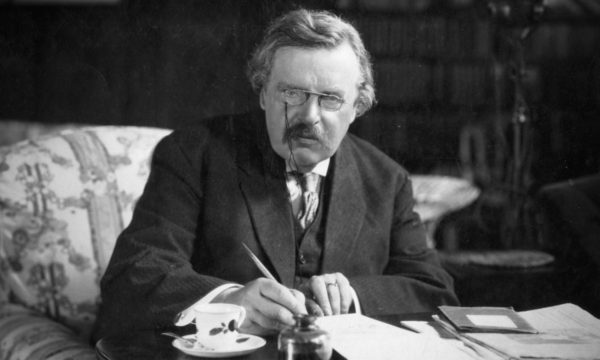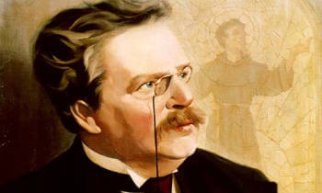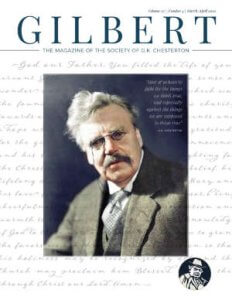Introductions to Books about People
G.K. Chesterton wrote introductions to about 200 books. 37 of these prefaces were collected by J. P. de Fonseka in 1929 for the volume GKC as MC. The subjects covered everything from Dr. Johnson from Aesop to Detective Stories. And while some of the other introductions found their way into posthumous collections edited by Dorothy Collins there were still over a hundred essays that linger in alone, accompanied only by the book that they happened to have introduced. We will divide these into four categories: books about people, books about places, books of literature, and books about ideas. Keep in mind none of these collections have actually been published.
In GKC as MC II – Introductions to Books about People, we would meet the famous and the obscure, including some who were both, that is, they were once famous and now they’re not.
Start with James Lloyd, who penned My Circus Life. Chesterton calls this memoir “a real, a very real, story parallel to the stories in which Dickens devoted himself to the experiences of showmen and wandering circuses or crawling caravans.”
Likewise, Recollections of an Octogenarian, by Isabel G. Homewood, a feisty lady who rode her bicycle all over the world. We forget that most feminists were also prohibitionists. Mrs. Homewood had no sympathy for feminists, whom she regarded as a bunch of complainers. She simply did whatever she wanted and was not going to let anyone tell her she couldn’t do it. The only thing she complained about was Prohibitionists, who prevented the thirsty cyclist from getting a drink when she wanted one.
Then there is the story of Will Crooks, another colorful character, who went, as the title of his book indicates, “From Workhouse to Westminster.” A true common man, and therefore a Chestertonian hero, he was a member of the working poor who became their representative as a member of Parliament. “He is really like the people for whom he stands.”
Add to that the biography of Sydney Smith (The Smith of Smiths), a 19th century farmer and preacher and scholar and wit, who, though not being a Catholic, fought valiantly for Catholic Emancipation, because he simply could not bear the illogic of any of the arguments against it. “He had, whatever else he had, a deep, human, hearty and utterly sincere hatred of anything that sounded cranky.”
And the biography of A. R. Orage, who had been editor of The New Age, the paper that brought together Chesterton and Belloc to debate against Shaw and Wells (and in which Shaw coined the epithet, the “Chesterbelloc.”) In this introduction, Chesterton quotes from a memory a long passage from an editorial Orage had written some thirty years earlier. Amazing.
Among the very famous the list of subjects includes John Henry Newman and Dr. Johnson (again.) The book that drops the most famous names (Wilde, Whistler, Manning, Gibbons) is by someone named Francis Augustus MacNutt. Raised by fiercely Puritan grandparents in Indiana, MacNutt would eventually convert to Catholicism and become the first American-born Papal Chamberlain, a now discontinued title, but was at the time the highest honor given by the Pope to a layman. Chesterton says that MacNutt’s life would make a superb drama for the stage, but it would be considered too realistic because it is too religious.
There are also introductions to books about not just one person, but a rather large group of people, such as the people in the Catholic Who’s Who of 1924 and again in 1925. He says that anyone who reads an introduction to a work of reference must be “a man of unusual and almost unnatural leisure; indeed he must be a man whose leisure has developed into a devouring tedium; and whose tedium has reached the point of desperation and recklessness.” But of course people are going to read it if it’s by G.K. Chesterton! That’s why a publisher wants him to write the introduction! Because only Chesterton will point out in such a work the great “democratic principle” of Catholicism: “the principle that the conversion of an Emperor or a President of the United States is of exactly the same value as the conversion of a tramp under a hedge or a convict under a gibbet.”





